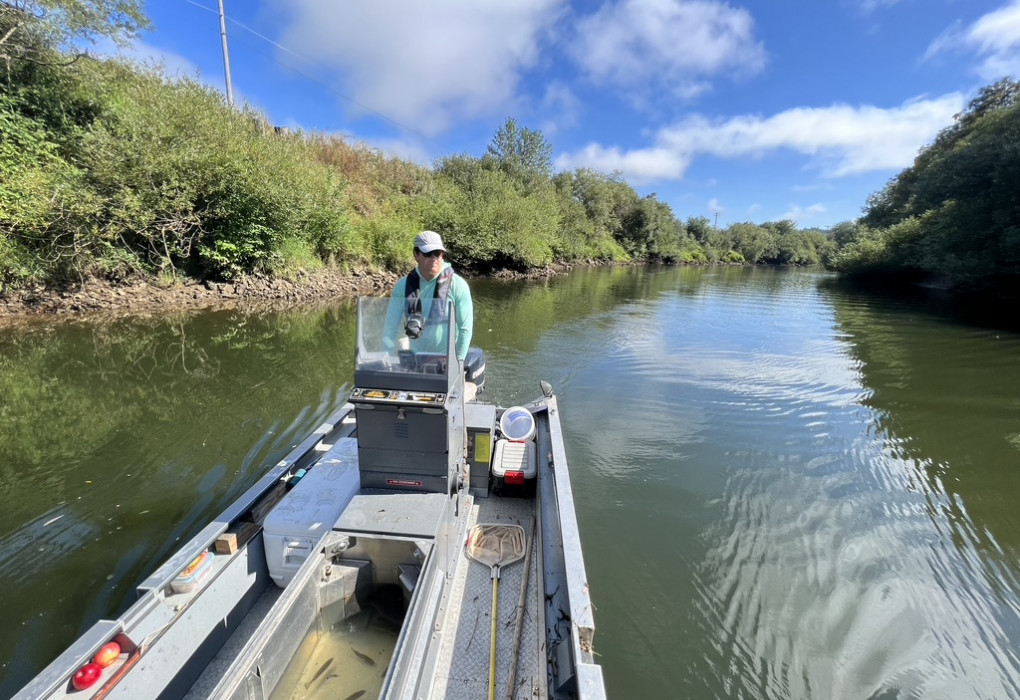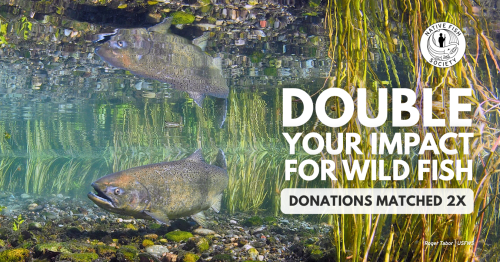A Catastrophic Coquille
It was a cool, damp Oregon Coast morning when an ODFW truck slowly backed a custom electro-fishing boat down a long narrow ramp near Myrtle Point, Oregon. It was obviously something ODFW Biologists Gary Vonderohe and Morgan Davies were used to. Within minutes, the boat was launched, and we were headed out looking for our first smallmouth or striped bass (also known as stripers) of the day. For years, during the hot summer months, fisheries managers, specifically Gary and Morgan, have been working hard to remove invasive smallmouth and striped bass from the Coquille River in hopes of helping the future wild fall Chinook that call the Coquille watershed home.
Last month, I traveled from the Umpqua basin to Coquille, Oregon to meet ODFW staff and understand the current issues effecting the Coquille River, a river with deep roots entwined in its wild fall Chinook. These fish are struggling, in fact, they're damn near gone. Starting in 2018, returns have averaged around 551 adult wild Chinook salmon. For reference, ODFW has identified Critical Abundance, or the number of wild fish returning before they have a real problem, at 2,833. Between the years of 2014 - 2017, the Coquille River was seeing an average return of 10,861 wild fall Chinook. That's right, over ten thousand wild fish, and here we are today with an average of 551 wild fall Chinook.
To think there is something wrong would be an understatement.
I sat at the front of the boat as we moved towards an area not shocked since early this spring. Gary and Morgan have been seeing fewer invasive predators than years past, a positive sign that their invasive removal might be working. As a crew, we started shocking the waters, interested to see what species we could turn up. Immediately small scuplins and bullheads started floating to the surface.
It took a few minutes before the true culprits started showing up in the waters we were fishing. Then steadily, one after another, we were netting smallmouth bass of all sizes. Some were the size of a fingerling while others were in the two pound range, a size any bass fisherman would be excited to catch. These fish came from the depths as Gary and I moved back and forth to net any non-native that caught our eye.
We worked all morning and into the afternoon, removing as many fish as we could. Near the end of the trip, we found an ideal shade tree where we parked the boat on the sludgy Coquille River’s muddy bank and started to process our catch.
Gary and Morgan do a complete evaluation of all the fish removed that day. We started by taking length and scale samples of the smallmouth. Then Gary selected a few fish to start removing the otolith, a small bone inside the fish's head. This allows scientists to do a full evaluation of the history of that fish. His samples collected are sent to an ODFW aging lab in Corvalis, Oregon to evaluate the age class and life history of these invasive predators.
As a crew of three, we made easy work of the 75+ fish we needed to process that day. Stripers were donated to the local food bank and smallmouth bass were sent to the raptor foundation (eagles, ospreys, birds of prey) to help the recovery of injured birds. Not a thing went to waste.
The knowledge I gained that day from experiencing the watershed firsthand was immense. I could see the amount of bass predation effecting the Coquille River watershed and its wild fish. I learned about the basin's hydrology and how springs make up a significant portion of flows creating the Coquille River. I saw firsthand how agricultural irrigation and cattle ranching impact flows and riparian vegetation on the river. It was clear, there are numerous limiting factors affecting Coquille River fall Chinook, and predation was at the top.
Electro shocking these predators is not a solution, its a bandaid fix. A long term solution for the fish and the river is needed to restore the viability and sustainability of the Coquille River. We hope through the current dedication in the watershed, agencies, tribes, and numerous stakeholders can work together to define a comprehensive strategy to solve this complex problem.
So far, Gary and Morgan think their work is creating a positive impact for wild fish. Their catch per unit (the amount of bass they catch for the same amount of effort) has dropped significantly this season. They started the implementation of shocking further up in the south fork of the Coquille River using an electrofishing raft from the John Day River and have so far removed more then 1,000 fish. They are making a serious effort to remove this limiting factor, and we should start to see the results of these efforts with more wild adult fall chinook returning this fall season.
Coupled with this work are other issues limiting wild fish abundance in the watershed. From ranching and farming to large-scale logging that has been ongoing for centuries, these human-caused impacts are still effecting the health of the entire watershed. If we truly want to solve this catastrophic issue, stakeholders and advocates must focus on all these limiting factors. This basin is experiencing death by a thousand cuts, and it's critical we don’t overlook any of them.
If there is anything you can do to help Coquille River fall Chinook, it is essential to support these efforts by ODFW staff to remove these invasive predators. Plan a visit to the basin next summer, catch smallmouth bass yourself, or better yet, spear some and take home a cooler full of fish. The Coquille River is one of the only watersheds you can spearfish in the state of Oregon. Look into ways you can support positive land use practices such as riparian restoration or assist in riparian fencing that keeps livestock off the river bank. There are numerous ways you can help, so get out there and get involved.
I left the basin that day hopeful for the future of wild fish. Not because of the newly adopted conservation hatchery program but because of the efforts of local folks working to make a difference for wild fish. Their efforts to remove considerable quantities of invasive predators will help give the future of wild fish a shot. Their knowledge, encouragement, and education of better land use practices for private and public lands will help craft a future that supports wild fall Chinook, winter steelhead, and Coho salmon in the basin.

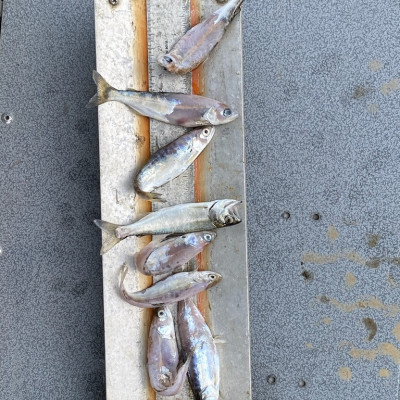
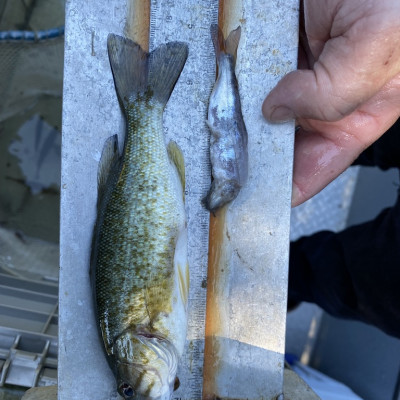
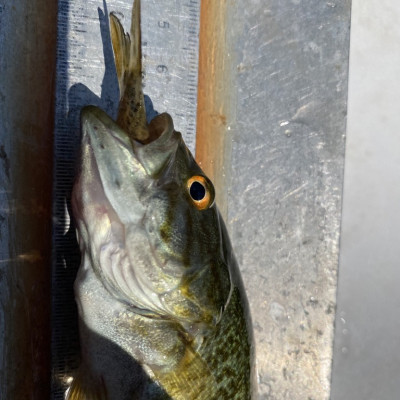
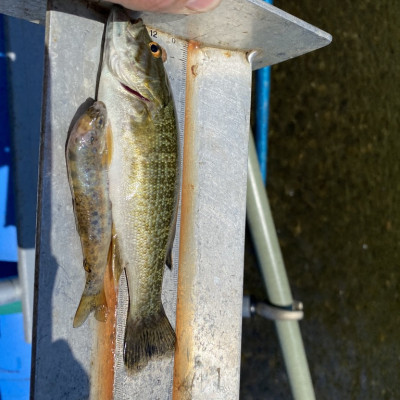
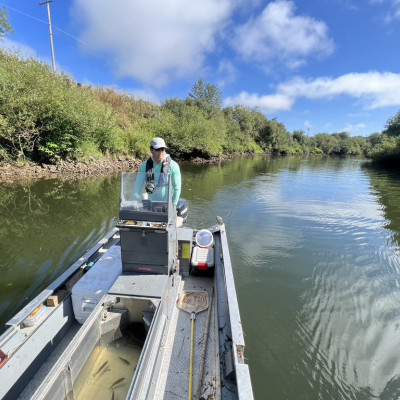
If you have any questions about Kirk’s visit that day or the Coquille Basin, please reach out to Kirk by sending him an email at kirk@nativefishsociety.org.
